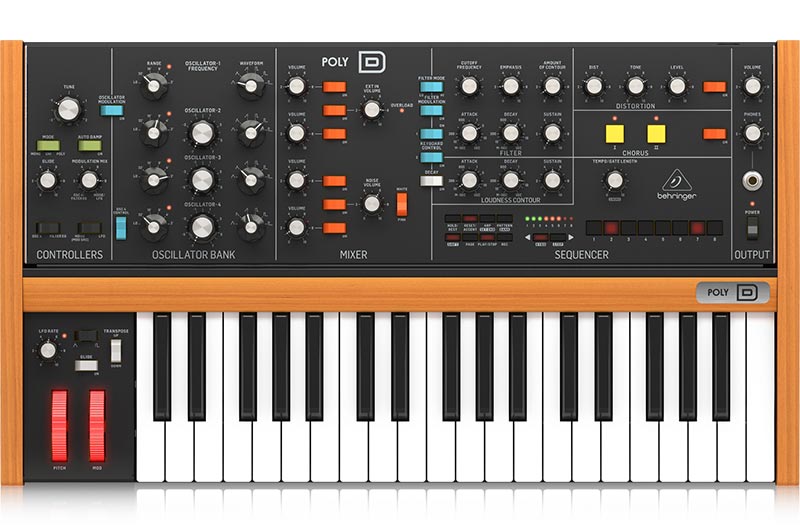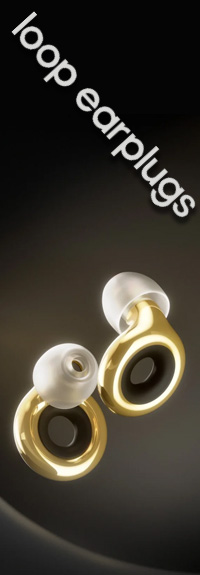Behringer has announced the Poly D. Behringer has taken care to design the POLY D to be the true to the original D Type circuitry with its matched transistors and JFETs, precision 0.1% thin film resistors and polyphenylene sulphide capacitors. In other words, Behringer has taken the architecture of their Model D, a recreation of the famed Moog Minimoog, and quadrupled it to create a 4-voice instrument with a 37-note keyboard.

With the POLY D, you can get the best of three worlds by switching between monophonic, polyphonic or unison modes. With the POLY D set to Mono, you can have the characteristics of a classic monophonic synth with fuller, more expressive solos, bass lines and portamentos. Flipping the switch to Poly allows you to play more than one note at the same time to produce stunning chord harmonies and luscious pads that add soul and depth to your music. Unison Mode thickens up your sound by layering all of the POLY D’s voices on top of each other, adding more harmonic content and creating a richer sound.
Behringer Poly D Features:
» Analog synthesizer with quadruple VCO design
» 4-Voice polyphonic/paraphonic design with mono, unison and polyphonic mode
» Authentic reproduction of original “D Type” circuitry with matched transistors and JFETs
» Pure analog signal path based on authentic VCO, VCF and VCA designs
» Five variable oscillator shapes with variable pulse widths for ultimate sounds
» Classic 24 dB ladder filter with resonance
» 37 semi-weighted full-size keys featuring velocity
» Stereo chorus based on authentic circuitry
» Distortion
» Voltage controlled 32-step sequencer with 64 sequence locations
» Arpeggiator with wide patterns
» Switchable low/high pass filter mode
» Dedicated and fully analog triangle/square wave LFO
» Noise generator
» Precision 0.1% Thin Film resistors and Polyphenyline Sulphide capacitors
» 84 controls give you direct and real-time access to all important parameters
» External audio input for processing outside sound sources
» Stereo outputs featuring servo-balanced output stages
» MIDI implementation with MIDI channel and Voice Priority selection
The POLY D has four Voltage Controlled Oscillators (VCOs) that provide a range of 5 waveforms for sculpting the perfect sound. Oscillators 1, 2 and 3 options include: triangular; triangular/saw; saw; square; wide pulse; and narrow pulse, while OSC 4 features: triangular; reverse saw; saw; square; wide pulse; and narrow pulse. Additionally, all 4 VCOs can be adjusted across a wide, 6-octave range (LO, 32’, 16’, 8’, 4’ and 2’). The very heart of the POLY D’s sound is its flexible 24 dB Ladder Filter, which lets you freely experiment with the Cutoff Frequency, Emphasis and Contour to dial in the perfect sound. POLY D’s Filter Mode switch can be set to either Lo- or Hi-pass for selecting the range of your choice. You can also adjust the Attack, Decay and Sustain controls to affect the cutoff frequency with time.

Input and output connections include: MIDI I/O and Thru over USB/MIDI DIN; After Pressure and Velocity outputs with their own dedicated volume controls; internal and external V-Trig I/O; external Loudness, Filter, OSC, and modulation source outputs.
Behringer’s Poly D will cost $600 / £599 / €699. No availability has been announced.
Behringer








